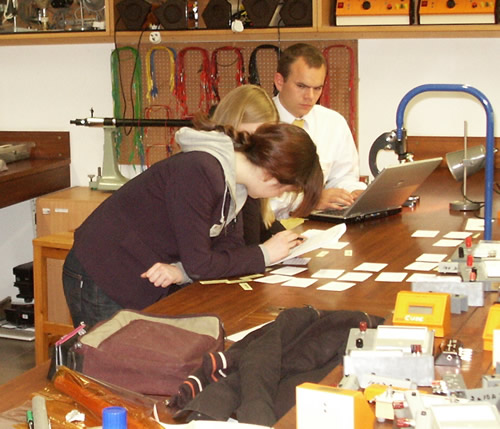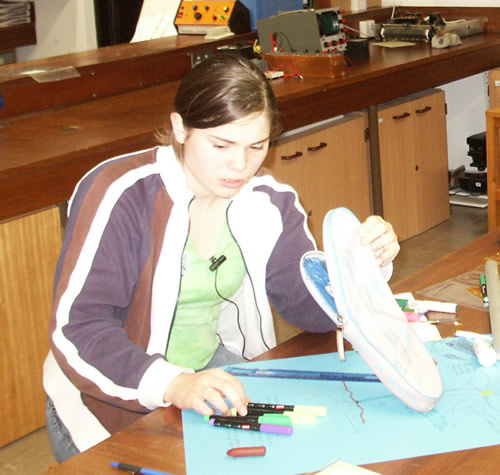 |
 |
| |

This SEP publication is designed to support science teachers,
those with responsibility in science departments, and
Gifted and Talented coordinators in schools. All schools
are now expected to identify their most able students
– the ‘Gifted and Talented’, and to demonstrate that the
special needs of this group are being addressed, following
inspection findings that indicated that, in general,
“very able pupils in
maintained primary and secondary schools are often
insufficiently challenged by the work they are
set” 1 |
Those comments were made by the Inspectorate
in 1992, and as recently as 2004 the Chief Inspector of
Schools has reported that
“Consistently high-quality
provision for gifted and talented pupils, for
example in secondary schools, remains the exception
rather than the rule.” 2 |
Meeting the learning needs of the most able is now a focus
of school inspections, and schools will be judged on how
they ensure that their highest attaining students are
facing appropriate intellectual demands. Schools, and
individual departments, need advice on how best to provide
for this group of students.3
All schools are now required to identify their ‘gifted’
students, and to ensure that they are being challenged
to meet their potential. This guidebook is intended to
offer practical advice on how to meet the learning needs
of the most able in science.
The guidebook provides an overview of some key issues
in gifted science education:
| • |
|
Who are the learners who may be considered
gifted in science? |
| • |
|
What is the nature of giftedness in science education? |
| • |
|
How can schools and teachers plan appropriate
provision to meet the needs of this group? |
These are major topics, and the present slim publication
is only able to offer an introduction to some of the key
thinking about gifted science education. References are
included to allow those interested to follow up these
topics in more detail.
Part of the impetus for this publication derived from
a concern among some in science education, both in universities
and schools, that the needs of the most able learners
were not easily addressed within science lessons constrained
by the English National Curriculum (with its ‘whistle-stop’
tour of myriad science topics, but little time to explore
issues in any depth). This led to a collaborative project
between the Universities of Cambridge, Reading and Roehampton:
APECS- Able Pupils Experiencing Challenging Science (http://www.educ.cam.ac.uk/apecs/).
The focus of the project was a University of Cambridge
Faculty of Education Seminar Series on Meeting the Needs
of the Most Able in Science which demonstrated that there
was quite a good deal of useful relevant thinking around,
although little actual research exploring how the most
able can be challenged in science. Teachers need practical
advice, supported by a solid research base, and this guide
is intended to offer the ‘best current advice’ in a currently
under-researched field.
In particular, it draws upon a project supported by SEP
(the Science Enhancement Programme), to design and implement
a programme of after-school enrichment activities for
Y10 (14-15 year olds). The ASCEND project (Able Scientists
Collectively Experiencing New Demands) was a collaborative
project involving the University of Cambridge Faculty
of Education working with the Confederation of Secondary
Schools in the City of Cambridge. Students from four of
the City schools came together in the Faculty of Education
to work together on a series of activities designed to
complement school science provision. Funding from SEP
supported the development of new teaching resources (made
available with this publication) as well as the logistical
support for the research/development project. The project
was staffed by science graduates studying in the Education
Faculty, who acted both as teaching assistants and also
as research assistants recording their observations on
the sessions.

Figure 1: Students were carefully observed
during ASCEND
We also recorded some of the dialogue between students
working together, to provide a record that would allow
us to consider the level at which the students were working.
Although space does not allow the inclusion of detailed
accounts of all our observations, a few ‘bites’ have been
included to give a feel for the way students were able
to engage in and respond to the activities.

Figure 2: ‘Miked-up’ - digital recorders
were used to capture some of the dialogue during ASCEND
sessions
The nature of science was used as the main theme for the
ASCEND project. Original teaching materials prepared for
these sessions are available on the accompanying CDROM.
It is hoped that these activities will be useful as examples
of activities that can be incorporated into school provision
more widely. Although ASCEND was a collaborative venture,
run as an after school enrichment programme, it may well
be that schools will wish to adopt or adapt some of these
teaching resources for use in other ways when working
with their gifted scientists.
By providing the rationale for activities, and an indication
of what the students at ASCEND made of these particular
activities, it is hoped that the guidebook will provide
science departments with ideas on how to develop their
own materials and activities suitable for their own most
able science learners.
|
|
|
 |
 |